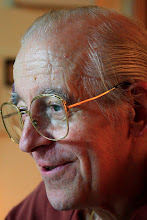
Il primo veicolo in grado di trasportare una persona venne inventato dall’ingegnere militare francese Nicolas-Joseph Cugnot (1725-1804), che nel 1770 costruiva un veicolo a vapore a tre ruote, noto col nome di Carretto a Vapore che il Cugnot guidava per circa un’ora alla periferia di Parigi finendo col fermarsi contro il muro dell’Arsenale, un evento oggi considerato come il primo incidente automobilistico della storia.

Il Carretto a Vapore di Cugnot
A quel tempo, chi si recava al paese natio per le vacanze doveva letteralmente competere per procurarsi il biglietto del treno. Il 26 settembre 1969, il JoongAng Ilbo pubblicava l’articolo Spinti, Pressati e Bastonati nel quale si leggeva che 110 mila persone si erano recate alla stazione di Seoul (서울驛, 서울역, Seoul Yok) per salire su un treno che li portasse a casa per la festivita’ del Chusok (秋夕, 추석) e la polizia dovette usare bastoni di bambu’ per mantenere l’ordine. Piu’ tardi durante gli anni ’80, l’automobile comincio’ a diventare un mezzo popolare di trasporto e coloro che non erano in grado di procurarsi un biglietto del treno usavano l’auto per recarsi al paesello natio. L'anno scorso, la situazione non cambiava di molto ed in occasione della festivita’ del Chusok per percorrere i 314 chilometri di autostrada che da Seoul porta a Pusan (釜山, 부산) si impegarono piu’ di nove ore.

L’autostrada Seoul–Pusan durante le festivita’ del Chusok
A nessuno piace stare seduto al volante di un’automobile per molte ore, percio’ una nuova invenzione potrebbe risolvere il problema. Due anni fa, lo specialista di computer americano Larry Page (1973- ), il fondatore di Google, osservando dal suo aeroplano privato il traffico nell’autostrada 101 nella Silicon Valley, pensava che solo la tecnologia poteva risolvere il problema salvando l’umanita’ dall’enorme quantita’ di tempo e spazio passato sulla strada. Da allora, Google sta cercando di sviluppare una automobile automatica senza autista che, secondo loro, riducendo le distanze fra auto sulla strada finirebbe col ridurre il tempo di guida e gli incidenti stradali. Secondo alcuni esperti, il numero di automobili sulla strada potrebbe raddoppiare rispetto a quello attuale con guida manuale. Se il progetto esce dal tavolo da disegno e diventa realta’, non passera’ molto tempo che ognuno di noi salira’ sulla sua auto informando della destinazione e l’auto pensera’ a tutto il resto mentre i passeggeri potranno nel fratempo riposare.
Il poeta e pittore inglese William Blake (1757-1827) diceva: “Quello che oggi e’ realta era prima solamente una immaginazione.” Lasciatemi sperare che quello che un tempo fu l’immaginazione del fondatore di Google possa presto trasformarsi in realta’ in modo che i futuri viaggi durante le festivita’ diventino un po’ piu’ confortevoli!
Giorgio Olivotto
Foto di Giorgio Olivotto
Seoul, Korea
19 febbraio 2012







